
22 Aug Volusion vs Shopify Vs BigCommerce vs WooCommerce Shopping Carts Review and Comparision
The E-commerce is the future and there are tons of players in eCommerce market including service providers that provide you with a platform for hosting your product/service to your online audience.
With the diversified market, it becomes tough to pick up the right eCommerce platform of your online venture. Building a website from scratch is another proposition, but that’s just not right for everyone as it includes spending a lot of money, even for getting average functionality.
Getting a custom build website also has incurring maintenance charges. With all the pros and cons combined, it is always better to go for an online platform that does all the basic stuff for you.
Today, I have the chance to go through not one, two or three, but 4 different eCommerce website building providers/tools.
They are Volusion, Shopify, BigCommerce, and WooCommerce. Currently, there are tons of eCommerce providers, but I decided to stick with these four for now.
Before, I start the comparison between the four platforms/tools, I would like to give some introduction on each of them.
Do You Really Need an eCommerce Solution?
Before, we move into the comparison, I want to answer this basic question. Do, you need an eCommerce solution? What will happen if there are no eCommerce solution providers? Does their absence make your journey easy or hard?
Let’s try to answer the question from an objective point of view on what happens if there are no eCommerce solution providers in the market. How does this scenario impacts you?
1. You need to hire a team of developers or a developer to create your custom shopping cart solution.
2. The costing of your project will easily land in thousands of dollars. And, the fact that the website or the solution require maintenance from time to time, increases the costing of the project to a few more thousand dollars.
3. After the initial investment, you still have to figure out how to sell your product or service — making it hard for you to turnover. This means more time before the profit flows in.
4. Old technologies perish and new technologies arrive. After few years, you might have to change your custom eCommerce solution and that means another hefty investment in your business.
5. Do you need new functionality for the website such as new payment gateway? Hiring a developer or a team is the only solution, increasing the cost further.
And, that’s sums up what you have to do. Don’t get me wrong as there are many entrepreneurs that require custom solution for their business and it is not the best solution for many of us.
But for the majority of us, getting work done is what matters. Initial steps are all about experimentation and these platforms/shopping cart solutions provide the best bet at an affordable price. I think, the need for the cloud-based shopping cart solution providers is a must.
Table of Contents
Introduction
1. Volusion
Volusion is one of the largest eCommerce solution providers on the internet. With 16+ years of operation, they are now seen as a big player in the market. The company was founded by Kevin Sproles and now it has 500 employees working 24/7 to serve the eCommerce solution to the market.
Right now, they are serving more than 40K stores and is funded over $90 million. The operations started in 1999 and now they have become one of the dominant forces in the online cloud eCommerce service provider.
2. Shopify
Shopify is also one of the leading web-based eCommerce solutions. With over 11 years in service and 175,000 merchants, they are growing steadily.
Shopify came into existence when three developers Daniel Welnand, Scott Lake, and Tobias Lutke decided to build a shopping cart solution for their business. They approached the problem differently and came up with Shopify. According to them, there was not a single shopping cart that meet their requirement — and Shopify was born.
Shopify was improved over time and Shopify 2 was released in April 2013.
3. BigCommerce
BigCommerce transition to fame is not simple. Their developers Mitchell Harper and Eddie Machaalani started out Interspire — a premium shopping cart that worked on the local setup. With the introduction of cloud, they decided to move their solution to cloud with more features and functionalities — giving birth to BigCommerce.
In late July 2012, they decided to give up Interspire and focused on BigCommerce. At that exact same time, they received funding of $15 million from General Catalyst partners, only to get superseded by $4 million funding by Revolution Growth.
Currently, they are offering service to more than 1,00,000 merchants and helping them achieve their dreams.
4. WooCommerce
WooCommerce is not new for WordPress users. But, by any chance if you are not into WordPress and heard the word WooCommerce and WordPress for the first time, let me introduce both of them.
WordPress is the most used CMS in the industry. It covers 23%+ of websites right now and is steadily growing at a rate of 1% per year. It offers basic blogging functionalities and can do anything you throw at it. For example, WordPress provides an eCommerce solution with the help of WooCommerce — a very popular WordPress plugin that transforms your website into an eCommerce hub.
The plugin first came into light in 2011 and have captured a staggering 12.72% 30% market share until now. The plugin is currently maintained by WooCommerce. You can use the plugin free of cost, but to really make progress, paid add-ons are required.
How Do We Compare Them?
Comparing platforms/shopping carts is not an easy task. To make the comparison fair, I will look into some of the key features of the platforms.
They are pricing, ease of use, hardware and software requirement, features, design aspects, add-ons availability, payment processing features, support, and service.
The main aim is to provide an objective comparison of the shopping carts. I will also provide an overall score for the shopping cart, which will provide you a quick glance at how good/bad the platform/shopping cart is.
So, why wait? Let’s start.
1. Volusion
Volusion is one of the popular eCommerce shopping carts available. It offers professional services for your eCommerce endeavor.
With Volusion, you don’t have to worry about payment gateway, shopping cart, etc. The team of Volusion takes care of everything. Their infrastructure is impressive and offers you will all the features you need to get started.
With over $17 billion items sold through their platform, it is safe to say that you can choose the platform for your online shop.
Like everything in the world, it comes with pros and cons. Let’s look into the pros of Volusion first.
Pros of Volusion
1. Support(24/7 Live): Support really differentiates a service from being bad or good. Many products might have great features, but without support they hold no ground. Volusion knows that and provides one of the best services in the industry.
They also provide 24/7 live support and you can reach them through different mediums such as email, online chat or via phone.
If you are looking for documentation, they also provide high quality video and text tutorials for both beginners and experts.
2. No Transaction Fees: If you are not new to the online eCommerce solution providers, you know how these platforms take some part of your profit as transaction fees. They are normally very low, but when summed up, it is a huge amount of money.
In this contrast, Volusion offers their service with no transaction fees. At first look, this seems to be an incredible offer, but there is a tradeoff.
Volusion limits your bandwidth and if you are experiencing a lot of customers at a single point of time, you need to buy more bandwidth from them. In my opinion, this kind of balances the lack of transaction fees.
The scheme can only benefit those who are just starting out and want to maximize their profit in their initial growth period.
3. Tools to Build the best eCommerce website: One of the biggest advantages of using Volusion is its incredible collection of tools at your disposal. With comprehensive tools, you can build your website that is capable of selling products efficiently.
The tools access is determined by the monthly package you are using. This means that the number of tools available is directly proportional to the amount you pay per month. The more you pay, the more tools you have access too.
Tools such as payment gateway integration, social media, mobile eCommerce, etc. are readily available with the platform.
Cons of Volusion
1. Blog Not Supported: To really leverage online presence, content marketing is a must. If you are a seasonal online marketer or entrepreneur, you know how important it is to reach the target audience through the blog.
Volusion biggest cons is the absence of a blogging platform/function. This can seriously decrease the online exposure and in turn decrease the profits considerably. The Blog is also important in building trust by providing reviews, views and highly optioned opinion on the products being sold.
The solution? Build blog elsewhere and connect it with Volusion store.
2. SSL Certificate: SSL certificate is important for any eCommerce website. It doesn’t depend on what you are selling, but if customers don’t see a secure connection, they will be more inclined to quit and move to another platform.
It’s not that SSL certificate is not provided by Volusion platform, but the fact that it costs a bomb and is not included in your monthly package. The SSL certificate can range from a basic $90 to a costly $1,000 per year.
3. Bandwidth Limit: Got a hot product and getting tons of visitors? You just made Volusion charge you more. It is quite obvious that you have to pay for the bandwidth charges, but one thing for sure that there should be a proper structure to achieve the end result.
If you cross the limit, you will be charged for extra usage and currently there is no way to monitor how and when the bandwidth is used.
Other eCommerce service providers are quite good in this aspect as they provide non-metered bandwidth and hence offers much better user experience.
User Base — Who should use Volusion?
If you are one of those entrepreneurs who just lacks technical skills to create a powerful eCommerce website, Volusion is for you. Volusion takes care of all the technical aspects and you can maintain your business and not its technicalities, which include taking care of marketing, adding products to the database and writing great content.
Ease of Use
I already mentioned that ease of use is one of the key factors in evaluating the service. When it comes to ease of use, we prefer it to judge from a non-tech person perspective.
Volusion is surely one of the easy to use eCommerce solution. It is easy to use and don’t require you to write a single line of code.
According to me, the builder can surely improve.
Design Options – Templates
Templates plays an important role for anyone using the service. Currently, there are more than 350 eCommerce focused templates. All of the templates are professional and some of them are free. The paid ones range from $50 per template to $895 per template. I still don’t understand how can a template cost $895!
Still, the collection of templates are unique and offers good collection over the others. Other platforms that we are going to have more freedom in terms of the template design.
Volusion App Store
Volusion App Store is quite vibrant and it offers a collection of 80 apps. The apps are necessary to add new features and functionalities to your store. The tools are under direct control of Volusion, but they are built by 3rd party software vendors who provide specialized expertise in one area.
The apps can help you to instantly add email service or analytics. The quality of apps are good, but the number of apps is quite low compared to other shopping cart providers. Volusion still has to go a long way before it reaches the likes of Shopify.
Conclusion: To keep it short, I must rate Volusion 6/10, and the sole reason behind this is the fact that the platform has still a lot to do in terms of cart improvisation, fee structure, and the cancellation fees.
With tons of reviews(negative), there is still confusion on how they charges your credit card for extra bandwidth usage and there are also complaints from many customers complained how the company asks for a $99 cancellation fees. When I contacted them, they denied the $99 cancelation fees, which seems odd.
On further researching, I found this Volusion Review which clearly mentions their $99-gambit.
Let’s move ahead to other shopping carts and take Volusion as the base of comparison.
2. Shopify
Shopify is our 2nd contender in the comparison. There is no doubt that the online eCommerce shop market is getting competitive and Shopify is a strong contender in this section.
Before, we move on and discuss Shopify, I want to put the Google Trend chart in front of you. This time it is Shopify vs. Volusion.
Clearly, Shopify internet popularity is increasing each year and Volusion seems to be going the other way. But, there is one thing that we should keep in mind is the fact that popularity in itself doesn’t mean that Shopify is better.
There are other factors that need to be evaluated. Without wasting more time, let’s resume our comparison.
Shopify, just like Volusion is not new. It has been there for the past 14 years and that’s kind of good thing. The internet is a changing hemisphere and past experience is never a bad thing.
We will go through the pros and cons of Shopify, and then figure out its ease of use.
Shopify is powering 175,000 online ships and has made $10 billion until now. I am impressed on the figures and they easily supress Volusion.
Pros of Shopify
1. Great Looking Templates (Affordable): If you are following me through the comparison, I told you how important it is for the eCommerce to look good? Let me tell you again, why it is important.
Great design creates credibility and gives buyers the necessary trust to buy something. With clumsy design, even a great product can fail.
Moving to Shopify, it offers 100+ templates. Most of the templates meets industry standards. One thing that separates Shopify from Volusion is the price range of the templates.
With just $18 – $180 per template, you are safe with Shopify. In comparison, Volusion template design just is not up to the mark.
One more thing that makes Shopify a true contender is the fact that template fees are a one-time(no monthly payment). Also, the templates offered by Shopify fits different roles, i.e., it offers templates for jewelry, clothing, furniture, etc.
2. True 24/7 Support: You may ask me on what’s true about the Shopify support. Everyone out there claims to give 24/7 support, but not everyone is true to what they claim to provide.
Shopify is different in this case. They provide excellent support through all the channels and helps you become the master of your website. The channels used by Shopify are live chat, email support, and phone support.
To achieve 24/7 support, they provide regional numbers which sink with the idea of the round-the-clock support. And, yes they have one of the best documentation for their services and platform.
3. Tons of apps or add-ons to play with: Addons are important for any eCommerce solution. Shopify does a great job in providing tons of apps/add-ons for you.
The current number of apps that are available are way beyond 1100+ and that’s a serious number.
Some of the basic types of apps supported by the Shopify platform are social media, payment, customer service, accounting and others.
The biggest advantage of using apps is the compatibility with the system, i.e., they work out of the box. Also all the apps are of high quality and require few minutes to setup. The process is quite smooth and you will not regret choosing Shopify.
One jinx in the golden crown is that not all apps are free. We will cover this more in the disadvantage section.
Cons of Shopify
1. Not all Apps are Free: This is where things get sour. Some apps cost you money with few coming with monthly charges. The idea of refilling your balance every month can be painful and I understand it completely.
Not all apps are necessary, but if you ask me can you survive without those apps? The answer is a simple no. There is no way you can survive without them.
You can export data and do some computation with 3rd party apps that are free, but that’s adds more complication and decentralized apporach.
Buying those apps is a long-term investment and that can be a headache for big eCommerce business. But, if you are doing business, buying those apps is what makes your business run. In the end, I will say it is a deal that you cannot resist, but will cost you some bucks per month.
2. The idea of “Liquid”: I am not a big fan of customization in shopping carts. But for any reason you need customization in Shopify, then it can be a tough task. The reason? Liquid. Not the liquid that is in your drinking bottle, but the liquid programming language.
Shopify has been build using the “Liquid” programming language and this can be a big concern for the users who prefer customization.
The number one reason that makes this a concern is the fact that it is harder to find “Liquid” developers. If you get hold of one, it won’t be cheap. The rarity in itself increases the charges of the developer.
Overall, customization can be a tough path that can cost you some extra thousand dollars.
3. Monthly Fee Charges + Transaction Fee: Not all business model are same and Shopify is different from Volusion in this respect.
Apart from the monthly fees structure(which is quite obvious), you need to give a 1-2% of transaction fees to Shopify. The good news is the transaction fees are only applicable to the lower plans.
The unlimited plans completely eliminate the need for transactions fees. This makes the deal sweeter for eCommerce clients who deal with tons of sales every month. Overall, you will save a lot of money.
If you are new to the platform or eCommerce as a whole, it is always a good idea to opt for lower plans and upgrade to unlimited plan once there enough traffic or purchases.
You can get hold of more information about Shopify payments here.
Should You Use Shopify?
Shopify user base is similar to Volusion. Shopify is more ideal for business who want a robust ecosystem with tons of apps to choose from. It also offers great design templates.
Any entrepreneur who is new to technology can take the path with Shopify and create their business much easier to handle.
Shopify’s Ease of Use
Shopify is easy to use, but that doesn’t mean it is just throwing a ball into the basket(even that takes some time and practice to do it right). If you are new to online eCommerce technology and are using this for the first time, it will take good 2-3 days to get hold of it.
And, if you have used any similar platform other than Shopify it will be easier for your to transfer your knowledge.
First of all, you don’t need to know any programming language. If you are good with your mouse and keyboard, you can almost everything within Shopify.
Also, don’t worry if you get stuck, as Shopify offers 24/7 support for their customers.
In comparison, Volusion is also easy to use but lack true 24/7 support. Also, Shopify offer better drag and drop builder compared to Volusion.
With the help of Shopify, you can do basic tasks such as adding images, managing products with ease, inventory management, create web pages and blogs for increasing traffic, track customers for better idea on how to optimize your web pages and much more.
Templates
Templates are cool — they are different and unique and offers you the best(and the first) way to convince your audience. A great looking professional website surely enables you to bring the best out of your business and creates the trust and authority.
Shopify offers tons of premium templates. For now, it has more than 1000 premium templates that look great. It also offers free themes. If you are just starting out with the platform, I would advise you to try out free themes before moving to paid premium themes.
The theme range is from $80 to $180, and I must say that they offer better theme pricing than Volusion who seem to have themes for 4000$! And, that’s insane.
Also, all the theme purchases have no montly recurring payment.
AppStore — The Hidden Gold Mine
eStore Design — Done.
But, what about functionality? Most of the online cart shopping services offers an ecosystem that helps to gain a lot of traction with templates as well as apps or add-ons.
Shopify offers over 1100 apps and that’s amazing. You can choose accounting apps, administrative apps, inventory apps for your shop. As usual, some of them are free to use, but other premium apps come at a cost.
Another disadvantage of the app store is that you have to pay a recurring monthly payment for the apps you are using on your eCommerce store.
Conclusion: Shopify Vs. Volusion
Creating an online store website is not easy. There are tools that you can use. For me, Shopify easily beats Volusion. There is no competition at all. With an better app, theme ecosystem, Shopify is the winner.
Shopify Rating: 9/10
BigCommerce
Our third contender is BigCommerce. With two eCommerce solution provider demystified, it is now the right time to move on to the next one — the big one? We will find it out soon.
Let’s check out the Google Trends chart.
This is interesting, Shopify easily dominates the other two platform in terms of Google dominance. But, numbers are misleading. So, lets turn our attention to what BigCommerce has in offer for us.
BigCommerce is one of the well-known eCommerce solution provider on the internet. With over 65 countries covered, they are now serving their services to 95,000+ active store and have already done $5 Billion worth of transaction.
At the first glance, they are similar to Shopify or Volusion, butit comes with some differences. So, why the wait? Let’s start digging the pros and cons of BigCommerce.
Pros of BigCommerce
1. BigCommerce Comprehensive Tools really stands out in the market. For the beginners, they offer tons of free tools/apps that can compliment your eCommerce store. It makes your store capable of handling different aspects.
For example, you can use newsletter tools, shipping and tax tools, statistics tools and much more.
2. BigCommerce offers Social Channel Leveraging for their users. This means that you can leverage the social media platforms such as Facebook, Google Shopping, eBay and earn more. The easy integration process simplifies the whole process and creates the right sense of control over expansion and product coverage.
Leveraging the already established platforms can really improve your business. The apps/tools integrate seamlessly and you get the best of the social media and your own BigCommerce store.
3. App Store of BigCommerce really shines. It offers tons of apps for your business and provide the necessary firepower to take your online store to the next level.
Cons of BigCommerce
Like everything, BigCommerce also comes with some cons. Let’s take a look at few of them.
1. Template design at BigCommerce seems to be a bit outdated. Some of the designs don’t really follow the latest industry standards and if you use them, you will not get the desired traction.
BigCommerce knows that they are lacking in this department and they are constantly on the lookout for adding new themes to their platform.
2. BigCommerce pricing can be on the higher side. With the players such as Shopify and Volusion providing almost similar to better service at low cost, you may not want to pay extra money. There is currently 2% transaction fees on the silver plan, which adds up on the monthly plan. You also have to pay the credit card fees and that can really add to the cost of the service.
Overall, the pricing is one the higher side and you can have better pricing options from Shopify.
3. AppStore is awesome, but there are some apps that are still needed by the community. With no open source community backing up, there is still a gap left between the need and the apps provided by BigCommerce.
You cannot add 3rd party apps until they are supported by the BigCommerce. This problem is more prevalent in all the three platforms, BigCommerce, Shopify, and Volusion.
4. Not so easy migration with BigCommerce. With only few export options, you are left stranded if you want to switch to other hosting or platform. The exports are done in plain excel files and that means you need to shell out more money for completing the migration process.
Even Shopify and Volusion are not free from this curse. They also lack better migration option and at the end it’s you and other clients who suffer.
BigCommerce is ideal for?
Now comes the big question. Should you go forward and use BigCommerce. Whom they are targetting?
In simple words, anyone can try BigCommerce. They have a very user-friendly interface and is targeted at first timers and also experienced users. For me, they are quite impressive in terms of user experience and design. The only drawback is the overwhelming options.
Only with time, you can actually overcome the complexity of the platform(in terms of available options) and focus on the platform itself.
Is BigCommerce User-Friendly?
I have already answered the question in parts in the last point. But now I will go in detail on what to expect if you are completely new to the online world and technologies such as an eCommerce solution.
For a complete newbie, it will probably take 5-6 hours to get accustomed to the platform. People with some experience can learn faster and get ready to fire their eCommerce store in 2-3 hours at max.
The good news is that they offer a Success Squad, a highly specialized team that can help you set up a store. They offer a free 30 minutes session just for you so that you can get accustomed to their platform as fast as possible.
Normally, you can reach them through multiple channels, it can be email, live chat or phone.
How awesome are BigCommerce templates?
Templates are as important as the functinality provided by the platform. In the cons, I already mentioned how outdated the templates are. Some are from 2010 and that’s quite old to be true. The good news is that BigCommerce is constantly adding more and more themes to their platform.
Some themes are great and adhere to the latest technological trends. With more and more themes coming to the platform, you can surely choose the best theme according to your product/service.
Also, if you want to experiment, you can hire a designer who can create a template for you. The advantage is that you can make design according to your requirement and designers are quite cheap in the market right now.
The Power of AppStore
AppStores is what makes your eCommerce store work. You can add newsletter, add security protocols, accounting functions and much more.
BigCommerce offers a lot of apps for your needs and day-to-day tasks. With variety and functionality checked, you can rely on the system for providing you all the necessary apps for optimal functioning of your eCommerce store.
The idea is to make apps as much free as possible. And, if you are not sure which app to use, you can use a trial version of the paid app to your advantage. Once purchased, you don’t have to pay monthly fees.
In conclusion, the apps are useful and gives you the control of customizing your eCommerce solution.
Support and Documentation
BigCommerce offers decent support and documentation. For beginners, the provide a good amount of documentation and tutorials to get started. During my research, I have seen many clients complaining about how it lacks proper documentation on advanced topics.
As far as I have gone through, the documentation can see some improvements. The community surrounding BigCommerce is strong and helpful. The forums are always buzzing and you will get your query answered by support staff or an experienced user.
Conclusion: BigCommerce Vs. Shopify Vs. Volusion
With a detailed review of the three platforms done, it’s time to put them side by side and see who shines.
Shopify has kept the honors until now. So did BigCommerce made any impact? The answer is no!
Shopify is still the best eCommerce solution according to me. It has better templates, app infrastructure and have a low price per month compared to BigCommerce and Volusion.
Shopify also offers better support than other platforms.
With only shopping cart left to compare, I want to see if Shopify can keep the crown to itself or WooCommerce can actually change the landscape of our comparison. Let’s just wait and watch.
WooCommerce
WooCommerce is our last contendor. Will it break the dominance of Shopify?
I must say we are in the last stages of the comparison and it is already 5,000 words long. Alright, similar to what we have done until now, I will start with the Google trends chart, comparing all the four shopping cart/platform until now. The chart will provide us with a hint, but is not the real picture.
Volume doesn’t signify quality, but it does signify popularity.
Moving forward, let’s have a look at the Google trends chart.
A little Introduction
Let’s start with WooCommerce introduction. But before we do, the introduction of WordPress is necessary. WordPress is the world’s most used CMS and is currently holding 24.2 % of the website on the internet.
According to trends, 25% seems to be achievable at the end of the year. WordPress is also the center topic at 85Ideas and we love WordPress for what it has to offer.
WordPress ecosystem is dense and is mainly composed of plugins and themes. Plugins add new features and functionalities, whereas themes act as the best way to change the appearance of your website.
Keeping the introduction part, WooCommece is an industry standard shopping cart plugin for WordPress platform. WordPress offers several shopping cart plugins, but WooCommerce stands out.
WooCommerce is now 4 years old. It first came into the scene in Sep. 2011 and have spread like wildfire in the last four years resulting more than 3.84 million downloads until now.
Another staggering statistics is WooCommerce composes of almost 30% of market share and is free to use. It is open source. But, who maintains the plugin? WordPress? Nope..It is maintained by WooThemes.
Over the past few years, it has evolved and now includes better security, localization and inventory management.
Let’s discuss the pros and cons of WooCommerce
Pros of WooCommerce
1. WooCommerce is opensource. WordPress is open source from the start and WooCommerce is no different. From the start, it has been on the open source wagon and have never claimed anything in return.
Open Source have tons of benefits and the most important of them is the freedom that comes with it.
2. Great Extensions for the platform. Like any other shopping cart in our comparison, WooCommerce also comes with add-ons and extensions. The core WooCommerce is sweet, but it doesn’t come with all the features. To use the features, you need to use extensions. While many extensions are free of cost, the most valuable extensions are not free. More on this later.
3. Scalable Solution: WooCommerce offers a scalable solution. This means that both small and large retailers can use the platform to their advantage. And this is also one of the reasons why WooCommerce is so popular among the retailers and online entrepreneurs.
4. One-Page CheckOut: WooCommerce is applauded for its one-page checkout options. Customers love it and also the owners. Quick and accessible.
5. Constant Improvement: WooCommerce being open source is constantly updated. With better bug fixes, you are safe to use the platform as your primary shopping cart.
Cons of WooCommerce
Like any other platform, WooCommerce is not perfect and that’s why we list some of its cons that its users always complain about.
1. It’s not actually free: I get the idea of open source, but that doesn’t mean it is free of cost for any usage. Most of its main functionalities comes from add-ons/extensions and they are paid. In the end, all the costs add up and it becomes a costly affair in the end.
2. Support: With open source tag many would say that the support would be awesome. But, that’s not what it is. Currently, the state of the support is not good.
The phone support lacks agility. If you opt for the ticket they take a good amount of time to respond. The best bet is their community, but it is also accessible after you buy WooThemes product.
3. Getting a WooTheme for better compatibility: In the end, it is a WooThemes product and getting a WooTheme’s theme(sounds trange) provide best functionality and compatibility. If you opt for any WordPress themes, you can be stuck with limited compatibility.
4. WooCommerce is not the easiest of the platforms to manage. Until now, all the platforms comes with easy to learn interface, and generally it is more inclined into user friendliness. But this is not true in the case of the WooCommerce. For beginners, WooCommerce can be a tough task to handle.
Anyone who has a good share of experience with WordPress can learn it much faster, but that’s a condition not matched every time.
5. Documentation is mediocre: WooCommerce documentation is not great. It is not linear in some places and can really see improvements.
WooCommerce Target Audience
WooCommerce can be used by anyone. It is scalable and is perfect for both small-scale and large-scale business. The only criteria are patience and learning capability. For beginners, the platform can be tough to handle as it requires some familiarity with WordPress.
They can opt to hire WooCommerce experts, who can set up the platform.
WooCommerce Ease of Use
The ease of use is subjective and that’s why I will approach it in the similar fashion. For the beginners, the biggest road block is learning WordPress itself. Once they master WordPress they can be confident in working with WooCommerce.
WooCommerce is just like any other plugin and once you install it, there is not much of a learning curve left. Creating products is easy as creating pages/posts and you can use tags, categories for categorizing them.
WooCommerce works mostly out of the box and it requires little configuration. If you buy extensions, you need to customize them too according to your requirements. Themes are easy to install, but always install themes that support WooCommerce.
WooCommerce Themes
WooCommerce is different. It is actually a plugin and that means you can use any WordPress theme on your website that supports WooCommerce. Most of the WooCommerce supported themes are available on WordPress, but I would recommend you to go with WooThemes as they are the makers of the plugin.
With the WooThemes, you get full support for their plugin and hence an improved control over your shop.
For coders, customizing the theme is easy, but there are also many WooCommerce themes that come with drag and drop builder easing up your customization experience.
Extension and Add-Ons
WooCommerce is a plugin and has some limitation. Not all the features have been included into the plugin and that seem to be a marketing strategy rather than a technical difficulty. This means that you have to get hold of some paid add-ons/extensions for utilizing WooCommerce in its full glory.
Appstore/extensions/add-ons have always been the part of other shopping carts that I have reviewed and compared until now in this article and WooCommerce is no different from them.
Some of the key extensions are WooCommerce Instagram, Flat Rate Box Shopping, WooCommerce pre-orders and others. All of them are paid and it requires an extensive research to understand you requirement clearly and then make a jump on paid extensions.
By default, WooCommerce supports basic payment processing so it is highly unlikely that you will need any payment extensions.
The Final CountDown: Volusion Vs Shopify Vs BigCommerce Vs WooCommerce
Well, if you tell me to choose one. I would choose Shopify.
And, if you would ask me to choose two, I would choose Shopify and WooCommerce.
And you get the point.
After reading a whole wall of text discussing the different eCommerce platforms, I guess you have made up your mind.
In terms of all the features, accessibility, ease of use, security, support and other aspects, Shopify is the winner.
Also, the right choice depends on your requirements. For example, if you need portability and freedom to move your content to new hosting or new platform, WooCommerce is your best bet. No other platform offers the type of portability.
Shopify wins because of the themes, add-ons, and overall support. WooCommerce comes close, but due to learning curve steps down to the 2nd place.
BigCommerce is quite awesome too, but it has to stick with the 3rd place for now. Volusion, on the other hand, is quite disappointing to me. I would not recommend Volusion to anyone for now. It has a bad reputation over forums and its users. It fails in the payment structure and also fails in providing a balanced environment for its customers.
WooCommerce can be your first choice if you are ready to get past the learning curve and it is important for you to understand that it will take some time to master. Also, using WooCommerce means you need to buy hosting and manage it yourself. The biggest advantage is the portability and freedom.
The most costly platform is Volusion and it is also not transparent. There is nothing much you can do with what they have to offer. WooCommerce is free, but extensions will cost you some money and that levels up the advantage WooCommerce had over the other three shopping cart solutions.
Shopify, on the other hand, has a strong pricing policy that suits everyone. Shopify for me has hit the right nail and that’s why Google trends seem to favor Shopify. In terms of popularity, WooCommerce comes second and part of its success is because of the WordPress platform.



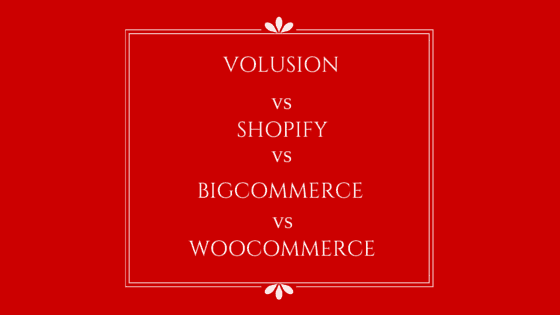

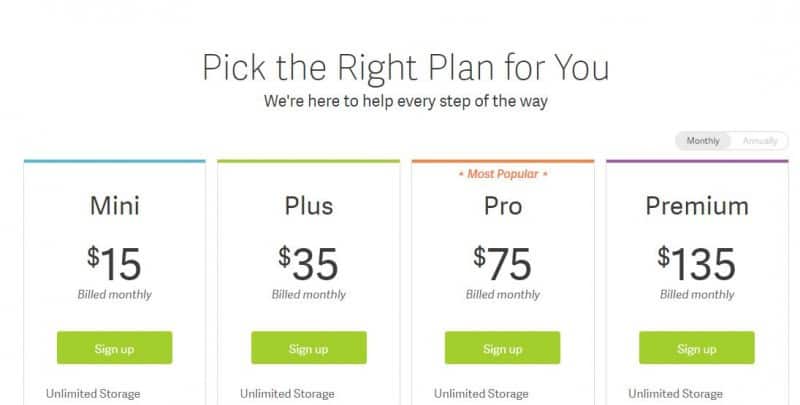

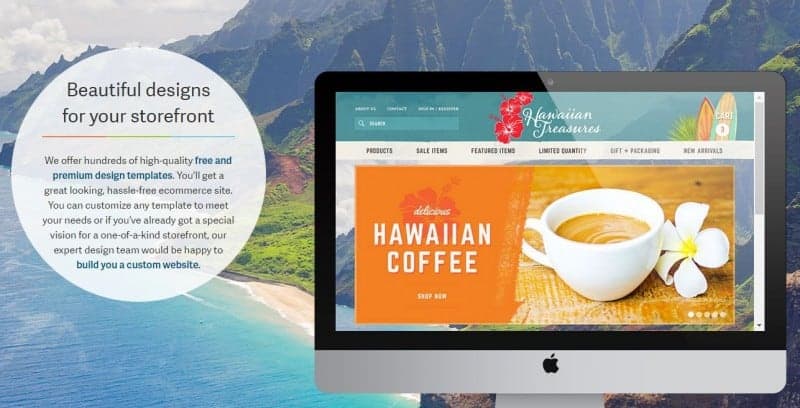
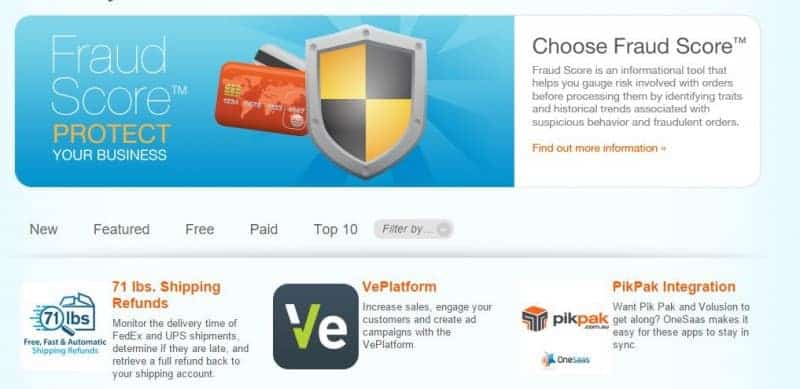
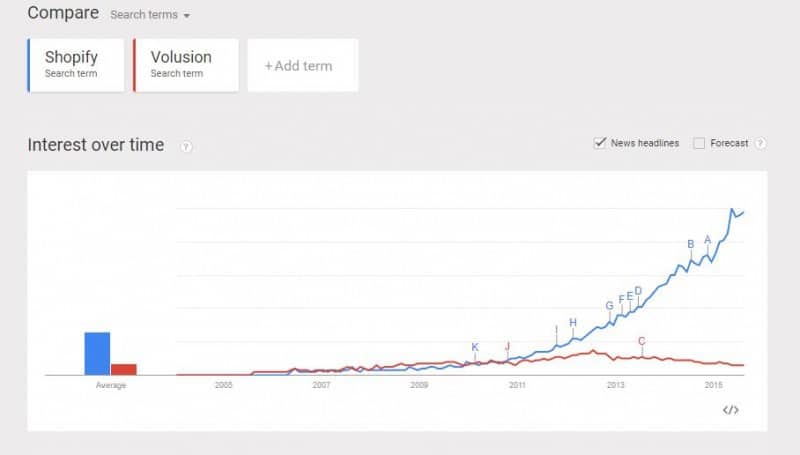


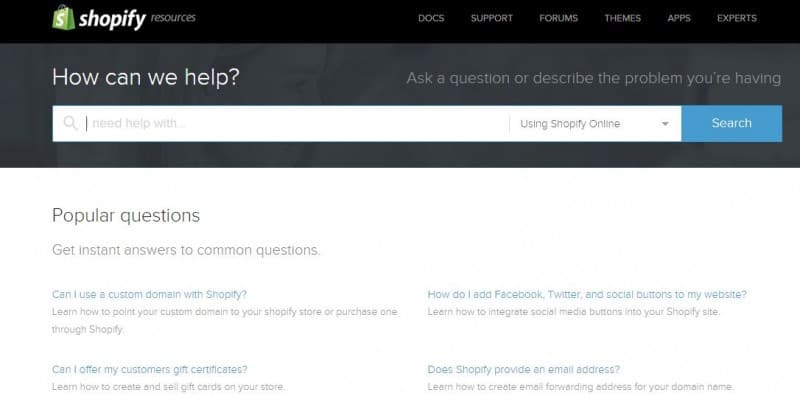




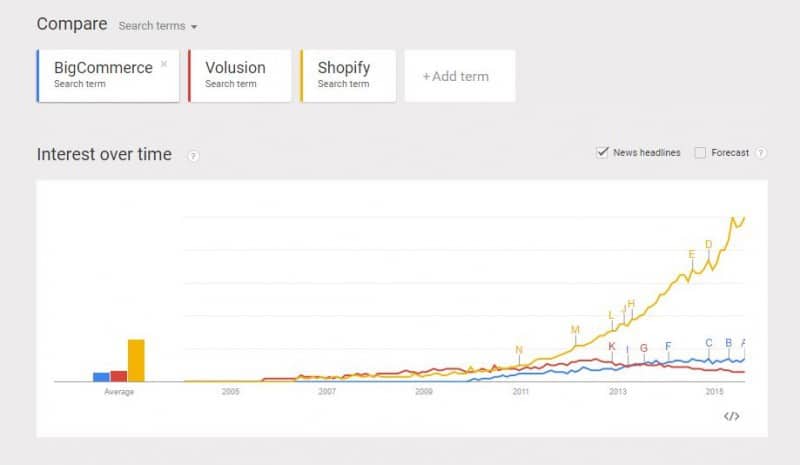


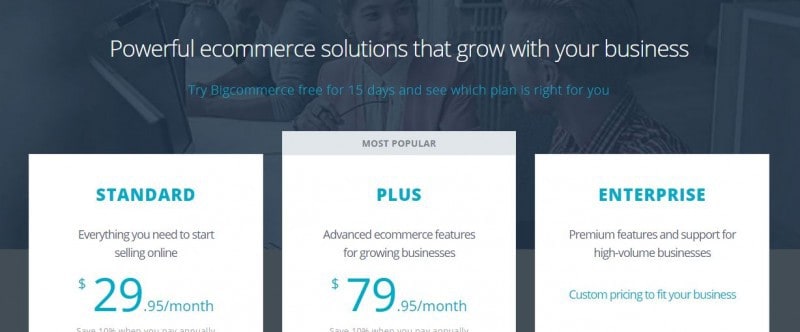

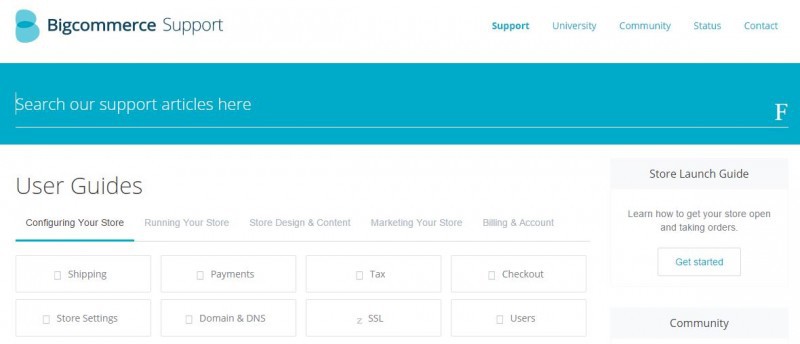

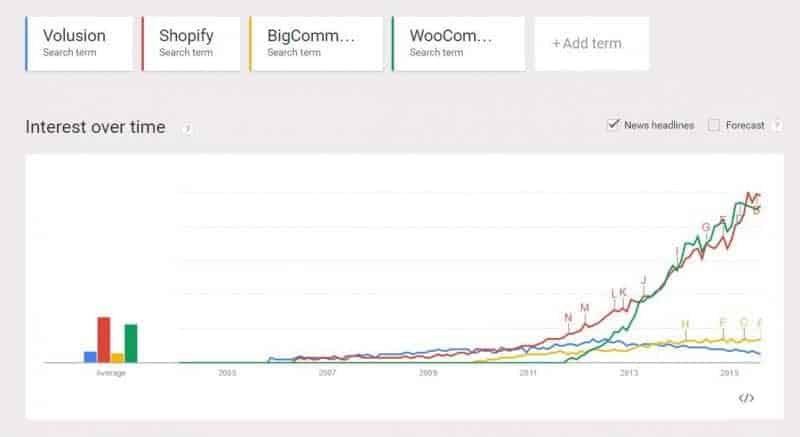


Richard Mellick
Posted at 16:42h, 30 OctoberGreat comparisons and very helpful since I am trying to decide on going to Shopify from Woocommerce and WordPress.